Trees Birds Mammals Fish Amphibians Reptiles
Wild Algarve
Bookshop
Entoloma cetratum (Fr.) M. M. Moser
Phylum: Basidiomycota - Class: Agaricomycetes - Order: Agaricales - Family: Entolomataceae
Distribution - Taxonomic History - Etymology - Identification - Culinary Notes - Reference Sources
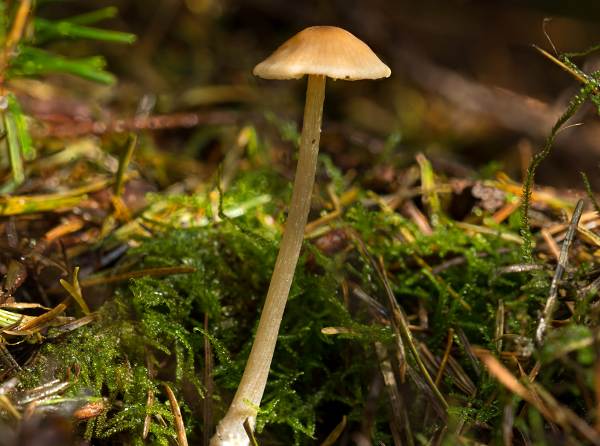
Entoloma cetratum grows singly or in small
groups on acidic soils in coniferous woodland and sometimes on heathland
Distribution
This woodland pinkgill has been recorded in England, Wales, Scotland and Ireland, where it is fairly common and widespread. Elsewhere in Europe Entoloma cetratum has been reported from northern Scandinavia right down to the Mediterranean. This species also occurs in parts of Asia, Australia and North America.
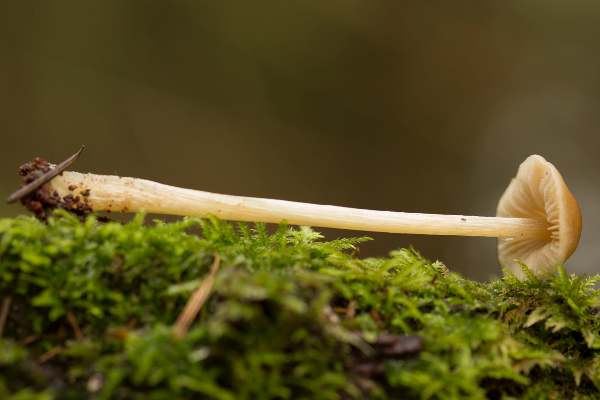
Taxonomic history
This attractive little mushroom was described scientifically in 1818 by Elias Magnus Fries, who gave it the scientific name Agaricus cetratus. The currently-accepted scientific name Entoloma cetratum dates from a 1978 publication by Austrian mycologist Meinhard Michael Moser (1924 - 2002).
Synonyms of Entoloma cetratum include Agaricus cetratus Fr., Nolanea cetrata (Fr.) P. Kumm., Rhodophyllus cetratus (Fr.) Quel., Hyporrhodius cetratus (Fr.) J. Schrot., and Latzinaea cetrata (Fr.) Kuntze.
Etymology
The generic name Entoloma comes from ancient Greek words entos, meaning inner, and lóma, meaning a fringe or a hem. It is a reference to the inrolled margins of many of the mushrooms in this genus.
The specific epithet cetratum comes from the Latin cetra or caetra, meaning a small light shield.
Identification guide
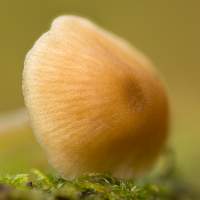 |
Cap
The cap
of Entoloma cetratum is conical to convex, sometimes becoming umbonate; pale ochre, honey-brown or reddish brown, becoming paler at the margin; smooth; hygrophanous; translucently striate; 2 to 4cm in diameter; margin not striate.
Pileipellis
A cutis of cylindrical hyphae 4-10μm diameter; clamps absent. |
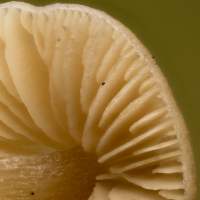 |
Gills
Yellow-ochre at first, becoming pink; adnate-emarginate, moderately spaced; gill edge sterile; cheilocystidia absent.
Basidia
Mainly 2-spored with some 1-spored. |
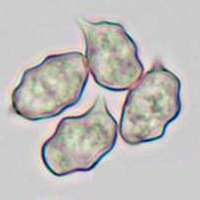 |
Spores
Heterodiametrical with 5 to 8 angles; 9.5-14 x 7-9.5µm.
Spore print
Pale pink. |
Stem |
Cylindrical, 1.5 - 5cm long x 1-3mm diameter; longitudinally fibrous; concolorous with cap; white at the base. |
Odour/taste |
Not distinctive. |
Habitat & Ecological role |
Solitary or in small groups in coniferous and broadleaf woodland among leaf litter amd moss. |
Season |
Summer and autumn. |
Occurrence |
Fairly common. |
Similar species |
There are many brownish mushrooms in the Entoloma genus,
including Entoloma conferendum, which is a very common and widespread grassland pinkgill. |
Culinary Notes
Entoloma cetratum is of no culinary value.
Reference Sources
Entoloma cetratum (Fr.) M.M. Moser, in H. Gams, Kleine Kryptogamen-Flora 2b/2, ed. 4 (Veerlag-Stuttgart - New York): 206 (1978).
Fascinated by Fungi, 2nd Edition, Pat O'Reilly 2016, reprinted by Coch-y-bonddu Books in 2022.
Knudsen H., Vesterholt J. (eds) Funga Nordica: agaricoid, boletoid and cyphelloid genera - Nordsvamp, 2008
Dictionary of the Fungi; Paul M. Kirk, Paul F. Cannon, David W. Minter and J. A. Stalpers; CABI, 2008
Taxonomic history and synonym information on these pages is drawn from many sources but in particular from the British Mycological Society's GB Checklist of Fungi.
Acknowledgements
This page includes pictures kindly contributed by David Kelly.
Top of page...
Fascinated by Fungi. Back by popular demand, Pat O'Reilly's best-selling 450-page hardback book is available now. The latest second edition was republished with a sparkling new cover design in September 2022 by Coch-y-Bonddu Books. Full details and copies are available from the publisher's online bookshop...